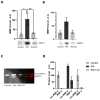Effects of Lithium Ions on tPA-Induced Hemorrhagic Transformation under Stroke
- PMID: 38927532
- PMCID: PMC11201972
- DOI: 10.3390/biomedicines12061325
Effects of Lithium Ions on tPA-Induced Hemorrhagic Transformation under Stroke
Abstract
Thrombolytic therapy with the tissue plasminogen activator (tPA) is a therapeutic option for acute ischemic stroke. However, this approach is subject to several limitations, particularly the increased risk of hemorrhagic transformation (HT). Lithium salts show neuroprotective effects in stroke, but their effects on HT mechanisms are still unknown. In our study, we use the models of photothrombosis (PT)-induced brain ischemia and oxygen-glucose deprivation (OGD) to investigate the effect of Li+ on tPA-induced changes in brain and endothelial cell cultures. We found that tPA did not affect lesion volume or exacerbate neurological deficits but disrupted the blood-brain barrier. We demonstrate that poststroke treatment with Li+ improves neurological status and increases blood-brain barrier integrity after thrombolytic therapy. Under conditions of OGD, tPA treatment increased MMP-2/9 levels in endothelial cells, and preincubation with LiCl abolished this MMP activation. Moreover, we observed the effect of Li+ on glycolysis in tPA-treated endothelial cells, which we hypothesized to have an effect on MMP expression.
Keywords: hemorrhagic transformation; lithium salts; oxygen-glucose deprivation; photothrombosis; tissue plasminogen activator.
Conflict of interest statement
The authors declare no conflicts of interest.
Figures






References
-
- Won S., Lee J.H., Wali B., Stein D.G., Sayeed I. Progesterone Attenuates Hemorrhagic Transformation after Delayed tPA Treatment in an Experimental Model of Stroke in Rats: Involvement of the VEGF-MMP Pathway. J. Cereb. Blood Flow Metab. 2014;34:72–80. doi: 10.1038/jcbfm.2013.163. - DOI - PMC - PubMed
Grants and funding
LinkOut - more resources
Full Text Sources

